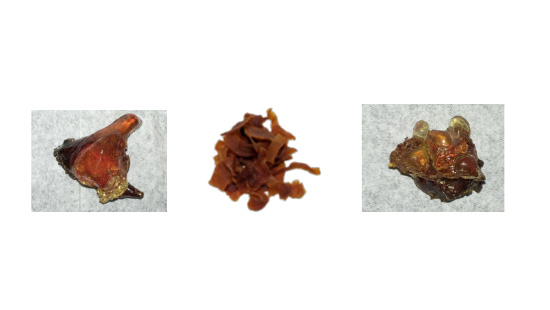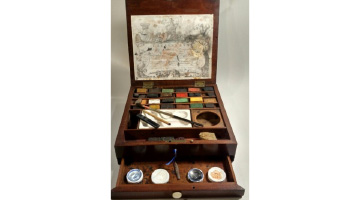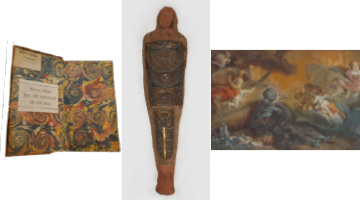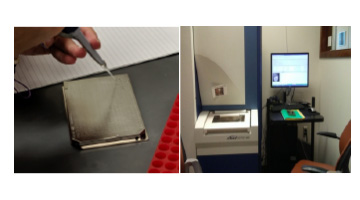About This Project
 Polysaccharide-based gums, exuded from plants of different genera such as Acacia (gum arabic), Astragalus (tragacanthgum) and Prunus (fruit tree gums), have been used historically as binders in watercolors and other painted works of art. As their identification and characterization by established (chromatographic and spectroscopic) techniques is often challenging and ambiguous, a novel methodology based on partial enzymatic digestion followed by matrix assisted laser desorption/ionization mass spectrometry (MALDI-MS) analysis was employed. An extensive database including mass spectra generated from more than 100 reference gum samples has been created with the aim to characterize and differentiate the plant gums, in some cases at the species level, in samples from art objects from various geographic locations and historic periods.
Polysaccharide-based gums, exuded from plants of different genera such as Acacia (gum arabic), Astragalus (tragacanthgum) and Prunus (fruit tree gums), have been used historically as binders in watercolors and other painted works of art. As their identification and characterization by established (chromatographic and spectroscopic) techniques is often challenging and ambiguous, a novel methodology based on partial enzymatic digestion followed by matrix assisted laser desorption/ionization mass spectrometry (MALDI-MS) analysis was employed. An extensive database including mass spectra generated from more than 100 reference gum samples has been created with the aim to characterize and differentiate the plant gums, in some cases at the species level, in samples from art objects from various geographic locations and historic periods.
The Goal
Our goal is to enlarge an existing database of reference spectra, focused initially on Acacia species, supplementing it with results from Astragalus and Prunus gums, in order to collect a significant number of characteristic mass fingerprints for each genus and species. Analysis of the reference spectra using a t-SNE grouping algorithm permits a better understanding of the gums’ differences and similarities, in relation to their taxonomy, allowing the characterization of unknown plant gums in historic samples to the genus, and possibly, the species level.
The Investigation

The Process
Well-provenanced samples of gums from Acacia, Astragalus and Prunus species were collected from historical and botanical collections (Kew Royal Botanic Gardens, London; The Field Museum of Natural History, Chicago; Faculty of Forestry, Sarajevo). All samples were partially digested with a specific enzyme which is able to cut the gum polysaccharide structure into smaller fragments (oligosaccharides).
These are then analyzed by MALDI-MS and a characteristic mass fingerprint obtained. The same protocol was used to prepare samples from works of art and historic artefacts, to be compared with the reference database. Mock-ups containing gums with different pigments and media were also prepared, to test if the other materials could influence detection or identification of the gums.

The Impact
This analytical strategy is unique in the cultural heritage field since it is the only one providing the possibility to characterize plant gums in historic samples at the species level. The ability to compare historic samples to an expanded database, now including data from Astragalus and Prunus gums, as well as other polysaccharide materials such as starch and dextrin, opens new horizons in the knowledge of artists’ techniques and material choices, as well as commerce and trade in specific historic periods.

Scientific Tools
The samples, after partial enzymatic digestion of the extracted polysaccharide, are spotted on a MALDI plate, mixed with a specific matrix, which acts also as derivatizating agent, and analyzed in positive reflector mode by MALDI-TOF MS (AB Sciex 5800) in the Laboratory for BioInterface Science and Engineering at Northwestern University.


 Polysaccharide-based gums, exuded from plants of different genera such as
Polysaccharide-based gums, exuded from plants of different genera such as 
